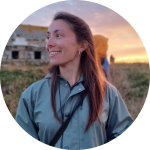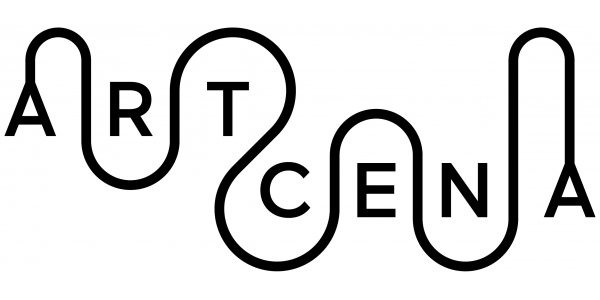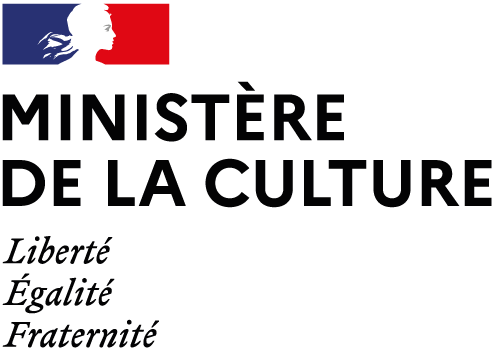FOOD FOR THOUGHTS: THE DIVERSE BODY/IES IN PERFORMING ARTS: INTIMATE DIVERSITIES — AN ECOPOLITICAL APPROACH TO CIRCUS
E: You know when you are on the rope?
L: Yes?
E: Do you ever feel like you're somebody else?
Foreword
Based on the common experience of corporeality – an experience that we share with an infinitely diverse multiplicity of living beings –, we have chosen to raise the question of “what makes a body diverse”, as a starting point for a wider reflection on the matter of the diversity of bodies in the circus arts. This deep dive into the diversity of “the intimate”, as shaped by the environment, is based on a more vast question: how does the circus, as an embodied practice, allow for the acknowledgement of its own diversity? And what happens once the floodgates have been opened? The very subject of “diverse bodies” calls for polyphony, encounters with others, and the pooling of experiences. To multiply the number of ways in which “diversity” can be recognised and reflected upon, we decided to weave this dialogue together. This clash of ideas brings to the forefront a number of contradictions, a diversity of voices, and varied writing methodologies. This text is the result of vivid reflection, of questions thrown out and answers caught on the fly to form an instantaneous translation from which a common thought emerges, before being unravelled and rewoven by the two of us.
Clinging to the intimacy of a subject with a strong political ring to it,
Using my body as the terrain, I set out in search of an embodied reality.
An archaeology of myself.
Armed only with my experience, I observe the diversity in my pores,
in my muscles,
in my scars.
Updating my own transformations,
I embrace the line and bind the memories.
Preface
What does it mean to have a body? What does it mean to be diverse? The term “body” all too often conjures up images of the human body as the ultimate body. But in addition to diversity in terms of geography, cultures, society, generations, genders, and ableness, we must also consider the diversity of living things, seen here as an opportunity to “become one” with the environment. By broadening the spectrum of what the word “body” can mean, it becomes clear that the experience of “corporeality” requires a specific context. As such, we are never “just a body”, and cannot be “somebody” alone. Camille de Toledo wrote that the body is a “crystallisation of connections” 1, and that “we are not isolated bodies” 2. Our bodies are part of a social, political, ecological, and historical construction, and we are different and diverse in relation or in opposition to this construction. The question of “diverse bodies” is therefore posed through an infinite multitude of prisms and possible readings. In relation to whom, what, and when are we diverse? In relation to what corporeal parameters are our bodies diverse? What histories? What policies?
By incorporating these questions, we choose to position ourselves within a framework that attempts to go beyond identity-based hierarchies 3 in order to conceive of a transcorporeal diversity ["I am a body in concert with ..."] and to reach a perspective of minute diversity that focuses on intimacy ["I am a multitude of diversities within myself"]. From this shift in scale emerges an ecopolitical approach to circus practices and an invitation to integrate intimate diversity into individual practices, with a view to creating a circus experience tailored to each individual. When the veil is lifted on everything that composes a body, and on the various ways in which each person defines this term, we get the feeling that corporeality goes beyond the boundaries that are conventionally accepted. From this broader consideration of what makes up and characterises a body emerges a unique way of inhabiting it. It would seem that “corporeality” implies intimate diversity, which is not something to be invented, but rather to be discovered and embraced. This observation leads to another: to think of the body as diverse through its lived experiences is a pleonasm, if not a tautology. The body is diverse in and of itself; the body is a body. The state of “being corporeal” necessarily implies “being diverse”.
I feel like an archaeological reserve of corporeal strata.
Like a constant moult, I observe what changes, what stays, what transitions.
The body over time
The body after a physical injury
The body after an emotional injury
The body after childbirth
The body after two births
The body after an abortion
The body after bereavement
The body after enjoying
The body whose memory imposes its multiplicity of experiences
These bodies are actualised and reactualised, in a constant state of resilience.
I am, thus, already a diversity of myself.
Traces of experience, connections with connections with practice and its apparatus
L: When does intimate diversity become apparent?
E: For me, this question of intimacy is linked to the practice of the circus arts, which in my case is balancing on a slackrope. This practice, combined with its associated apparatus, makes it possible for me to recognise and stand by my own diversities.
L: What do you mean by “practice” exactly? How do you define “apparatus”?
E: For me, the combination of the practice itself and its associated apparatus gives form to a kind of alter ego. It creates a place where you can confirm or refute your own questions and theories, a place where you can feel at home and reveal the ever-changing states of your body. I suppose that it is, among other things, a place where the body can be observed. This passionate practice, which is so demanding of the body, accompanies my experiences. How do the events of your life align with your practice of your art? How does the encounter between the two confound our perception of ourselves and our multi-unity? Each time we return to our practice, we recognise what is there, what is no longer there, and what is possible.
Coming back to the circus,
It's like coming home, but in a different way.
This place where you live without thinking, just because it's there,
because it has always been there.
Recognising and integrating the layers of oneself.
Listening to and accepting what your body is saying.
Making memories material.
L: How do the intimate diversities and changes you see in your practice mould your art? How do they mould you?
E: After every life-changing event, another body appears. By practising the circus arts, they become a mirror, showing me where I am, and how many layers of my own experience I have accrued. Returning to the circus arts has allowed me to realise that I am no longer the same person I was before, and that my body is no longer the same body trained in this discipline. The practice itself is an intimate aspect, in this place of self-recognition, of the changes that lead to diversity: in other words, of the new corporeal strata that are added, juxtaposed, and superimposed. Death and birth – the experiences of mourning and of giving birth – are two extremes that have shaken up my practice of balancing; they have collided with my once-incorporated vocabulary and prompted me to find other forms of movement. It's as if my body had become foreign... And on the rope, it takes cognisance of the vestiges of itself in a technique that has become obsolete. The body tries to find new paths, in direct resonance with what it has been through. There are major events in each person's life, but there are also nuances that mean that even everyday life brings its share of diversities that manifest themselves in emotions, ailments, failures, and renewals.
L: The body goes through events that are remembered and remain. For me, the vertical rope becomes the place where I observe and actualise myself, the place where I arrange the new layers of myself, coming to terms with what has been and what is to come. In other words, if I take note of all these layers, my circus practice can reflect my internal geology.
E: Yes, completely. Even after being away from the rope for a while, and not practising my art, it's still the same experience. Beyond the trauma, the fact of not practising regularly means a deeper reconnection when I do come back. It's also a kind of refuge, even a relief when once you realise that some things remain the same, and don’t change. Like a solid foundation for getting back out there. That's why I like to talk about archaeology, about strata, about the notion of multiple “selves”, and about several bodies that live together in harmony.
L: But how do we find the openness not to remain solely in an experience of the self that becomes egocentric, even a little anthropocentric?
Life experience, connections, and the laws of nature
L: We agree that the practice of circus arts and the connection to the apparatus itself make it possible to awaken intimate diversity. But how do you extricate yourself from the archaeological dig that is introspection? In simpler terms, how do you
go from micro to macro?
E: That's the opening question of our text, and that comes up in our initial dialogues. For me, this idea of the transcorporeal aspect is that of creating a body beyond our bodies. It's not just a question of looking at ourselves and referring to ourselves.
On the contrary, this introspection as you put it is the way to a broader and, in my opinion, more necessary and more urgent observation. Something more along the lines of “double openness (infracorporeal and transcorporeal) that opens the living
human being to more than itself”. 4 Many of the metaphors for life itself can be found in the act of rope balancing: the inevitability of falling, the permanent relationship with gravity, the dependence on physical laws. The circus – a major feature of which is to play with these laws
– forces us to move away from ourselves, as it encourages us to recognise that the body is in constant relationship with its environment. We are subject to physical laws that constantly actualise our bodies, and in this respect, internal diversity is an
experience that is equal and shared with all living things, both human and non-human.
L: Steve Paxton defined gravity as a "basic physical circumstance of human fate” 5, which we could amend to “of all living things”, or at least “of things with mass”. All circus disciplines involve an intimate relationship between the performer and
their partners (the ground, the apparatus, other humans, and many more besides), which can give rise to a different – if not extraordinary – relationship with the world. You must find your balance on the rope, within yourself, but also in this within-
without relationship. I cannot be on the rope without being connected, both to my own transformations and to the environment around me – which, incidentally, is what makes my aerial practice possible. Within this place born of the exceptional and
the unusual, it becomes possible to experience gravity in a different way, to increase its pressure, to play with it, so the circus
performer-apparatus duo can celebrate and enjoy this "basic physical circumstance".
E: It’s as if you cannot practise the circus arts without being aware of your body, your environment, and the ways in which you perceive and receive them.
Mirror of practices: the ropes most travelled
Walking on the slackrope, keeping my balance, taking in the states of my body, acknowledging the micro-movements that allow me to stay in place, my connection to gravity, how close
I am to the edge... What body am I in at that moment? With my desires and my everyday worries, my questions and my attempts at answers. Who is the person crossing the rope?
Not having to choose, opting for fluidity within my own layers. These stages of life and these corporeal processes – be they parallel, synchronised, or deferred –, which converse and combine and become one with the practice. No longer touching the ground, seeing my intimate diversity, reaching deep into my core. Climbing the vertical rope, observing the world, imagining myself as immense while feeling tiny. The aches and pains from the previous day creeping up, the bruises from previous injuries adding up, and I strive, by swapping my verticality for another, to integrate them into this game with gravity. Sweaty palms, chafed skin, the rope coiled around my flesh, I gather myself in the air and capture the space around me.
What does it mean to be a diverse body in the circus?
The question of inclusion
In our search for embodied knowledges, we have chosen to speak from the body, rather than about the body. We tried to put into practice what Ursula K. Le Guin advocated, namely “[...] to tell stories differently, to relay concepts that would help populate other imaginations [...]” 6. And that's how we set off in search of our own transformations, which lead us to diversities that we have dubbed as “intimate”. With this utopian perspective of a circus that reflects every type of diversity, the singularity of every body and of every story, there is no reason why the circus cannot be practised and performed by anyone, and thus represent every form of diversity.
So why doesn't the circus look like this in real life?
Using a piece of apparatus common to the both of us as our basis, namely the rope, each type with its own very different characteristics and uses, we tested the paradox of the circus: that of being a space-time continuum where it is possible to observe and recognise one's own diversity, while at the same time representing, among other things, the heritage of a codified technique. Indeed, we have both gone through the process of integrating the technical and aesthetic canons of the circus that result in the formatting of our bodies and draw a line under this art form, a border that is hermetically sealed off from diversity.
Decanonising and deconstructing practices through respect and listening,
so that each body can see and acknowledge itself in its own way.
It's not just about the self and the apparatus and the infinite connections forged with the world, as if inclusion and diversity were issues to be resolved alone.
Taking note of what has been agreed and what has been freed up,
taking a stand,
taking one’s place.
The realm of the circus is an artistic world that continues to discriminate, always showing the same bodies and perpetuating the stereotype of strong, beautiful, young, able-bodied physiques. And yet there is an incubator of corporeal diversity in the circus, animated by those who practice it, but which is not made visible nor disseminated.
Because inclusion and inclusivity are not self-evident.
What can be done in order to overturn these obsolete representations that fail to be inclusive? Can we look for an answer in what connects us? In our view, this is a reflection that should be viewed through a transcorporeal prism, focusing on ecopoli- tical thinking, and accepting the connections that allow us...
...To be in this world.
1 Camille de Toledo, Thésée, sa nouvelle vie (Theseus, his new life), Lagrasse: Éditions Verdier, 2020, p. 10.
2 Ibid, p. 97.
3 This is not to neglect nor to deny the urgent need to recognise diverse bodies and the difficulty they have in being represented in the circus as much
as everywhere else, but to recognise the stigmatising aspect of the categories through which these diversities are viewed. See: "[...] how can we develop
antidotes to the identity-based hierarchies that separate us and prohibit encounters by containing beings within the toxic categories of modernity and
coloniality (gender, race, class, species, ableness...)?", Emma Bigé, Mouvementements - Ecopolitiques de la danse, Paris: Éditions La Découverte, 2023, p. 17.
4 Emma Bigé, Mouvementements - Ecopolitiques de la danse, Paris: Éditions La Découverte, 2023, p. 16.
5 Steve Paxton. Gravity. Brussels: Éditions Contredanse, 2018, p. 86-87.
6 Reformulation: Ursula K. Le Guin, Dancing at the Edge of the World. Paris: Éditions de l'Éclat, 2020.
Emma Bigé, Mouvementements - Ecopolitiques de la danse, Paris: Éditions La Découverte, 2023, p. 30.

Lucie Bonnet is a French aerialist and doctoral student in the Performing Arts (specialised in Circus Arts) at Grenoble Alpes University (UMR 5316 Litt&Arts, ED LLSH, France) under the supervision of Gretchen Schiller and Marion Guyez. Her thesis on contemporary aerial practices, which she began in October 2020, relies heavily on her position as a vertical rope practitioner and her close links with the circus world and its know-how. Her doctoral research examines the complexity of the processes involved in creating perfor- mances based on experimentation with aerial materials and aesthetics, leading to a renewal of the technical and physical language of circus forms.

Eleonora Gimenez is an Argentinian slackrope, stage director, and artistic director of Company Proyecto Precipio (France). Having studied Sociocultural Anthropology from the National University of Rosario (Argentina) and training in the circus arts – initially self-taught, then at the Académie Fratellini (Saint-Denis, France) –, she is particularly interested in the grey areas where the circus touches on the human sciences and the various forms of expression in the performing arts. She has lived and worked in France since 2008. Eleonora won the "Authors in Tandem" scheme run by ARTCENA for the 2023/2024 season alongside Julie Aminthe. This initiative encourages two authors, one from the theatre and the other from the circus, to meet and work together on a cross-disciplinary writing project.






write us: infocircostrada@artcena.fr